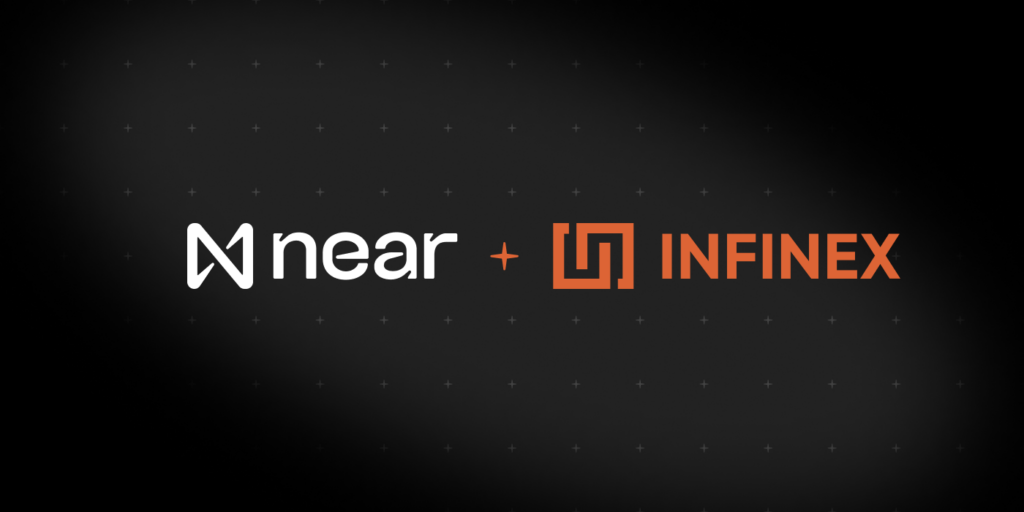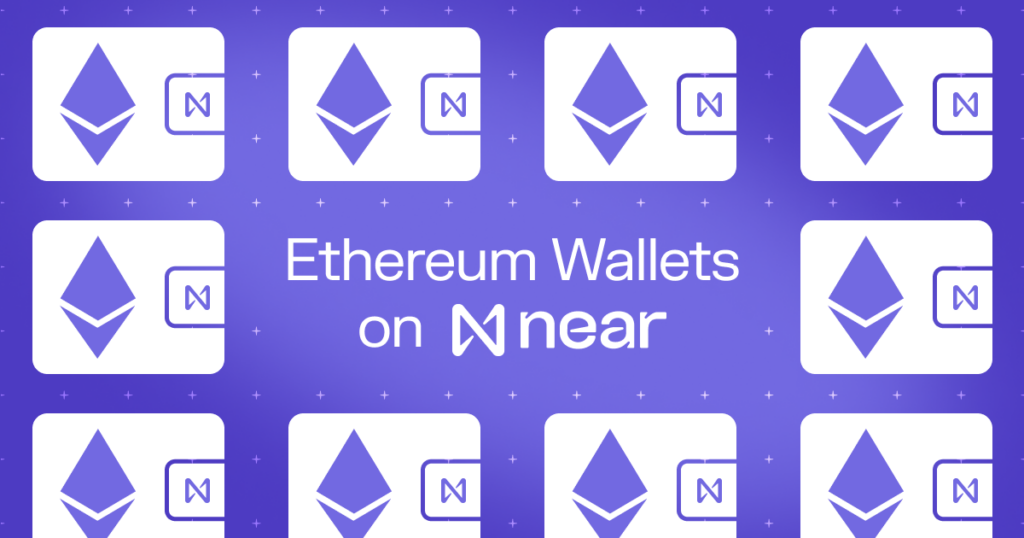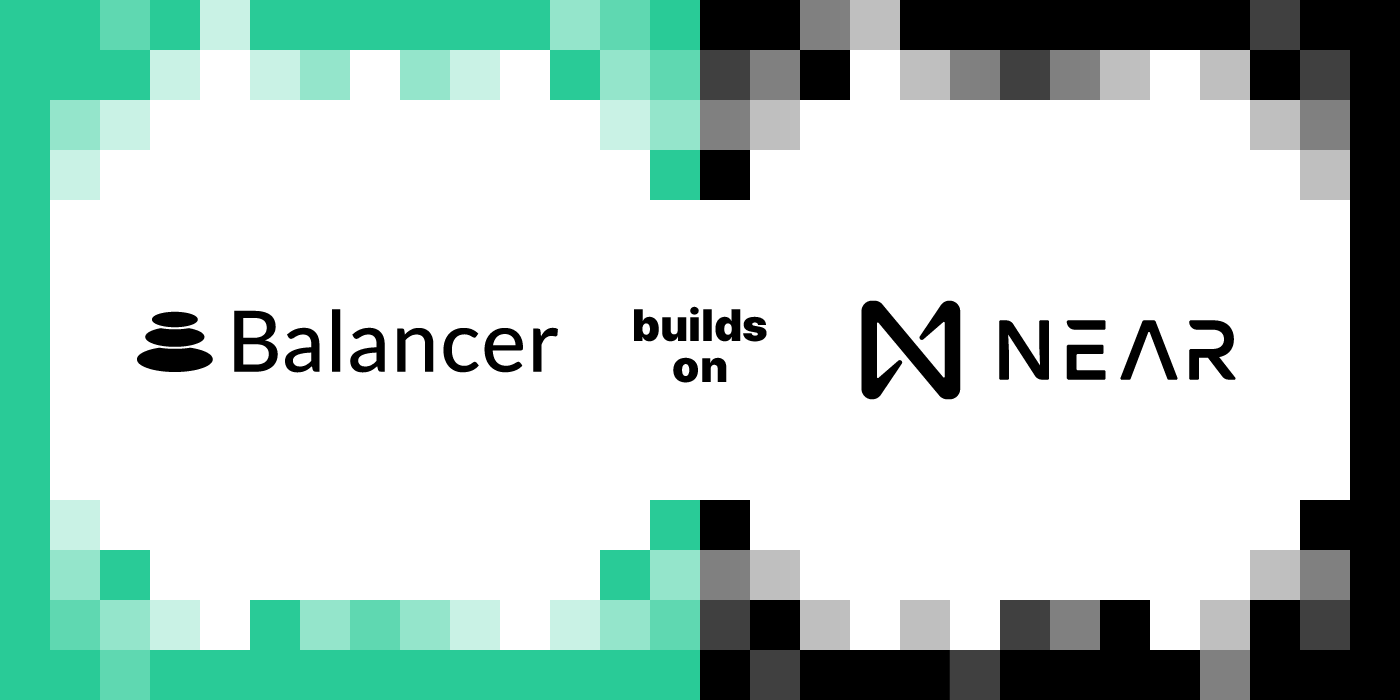Balancer’s DeFi Protocol is bringing Programmable Liquidity to NEAR
With the unrestricted MainNet launch just over a week ago, the NEAR community is hard at work to bring best in class applications to the platform. Balancer is the latest addition to a vibrant ecosystem of protocols and projects using NEAR.
NEAR’s smart contract platform shares a vision with Ethereum, making it easier for DApps to migrate or move between chains. The key difference is that NEAR is heavily focused on achieving both the usability and performance necessary to support at-scale real world applications with lower gas fees, low latency, and a flexible account model.
NEAR Protocol is helping companies like Balancer scale beyond what’s been possible in blockchain before. We spoke with Jeremy Musighi, Head of Growth at Balancer Labs about the community driven growth of their platform and why Balancer is excited to be building on NEAR.
“We’re excited to partner with the NEAR team in co-funding the development of Balancer on the NEAR protocol. While the Balancer Labs team remains focused on Ethereum-based development of the Balancer protocol, we welcome the opportunity to support building on-chain liquidity on NEAR, while observing and learning from how Balancer’s technology performs when paired with the lower gas fees and low latency that the NEAR protocol offers.”
Decentralized Liquidity is Key
Balancer is a protocol for programmable liquidity; a fundamental component of decentralized financial applications. The platform provides financial building blocks upon which anyone can easily create DeFi products and services not possible before in traditional financial systems.
Balancer pools are automated market makers (AMM) that function as self-balancing weighted portfolios and price sensors. This enables decentralized solutions like trustless exchange of assets, automated index funds, fair and transparent token distributions, and smart treasury management solutions.
Balancer’s Killer DeFi Use Cases
Above all, one of the most exciting aspects of Balancer is giving liquidity providers an opportunity to earn passive income from swap fees when they stake their assets into liquidity pools. This gives token holders across a variety of assets like Bitcoin, Ethereum, and NEAR (soon!) the ability to earn a return by holding their tokens in order to provide liquidity in the market.
This concept of decentralized liquidity powers four of the primary use cases emerging from the Balancer Protocol.
- Decentralized Exchange – Balancer’s liquidity pools are the backbone that powers their AMM-based trading platform. As a decentralized exchange, Balancer is non-custodial, meaning that there is no third party holding customer funds. Instead, funds are trustlessly held by smart contracts, allowing trades to occur directly between traders and liquidity pools.
- Automated Index Funds – Balancer’s platform allows you to create groups of assets in portfolios that are automatically rebalanced. This exciting alternative to traditional index funds / ETFs puts the power in the community and eliminates fees and overhead. Where you would normally pay fees to a middle man like Fidelity, Balancer flips the model and enables investors to earn fees while still reaping the benefits of a managed portfolio with diversified risk.
- Launching Fairer Token Sales – Among the various types of pools on Balancer are Liquidity Bootstrapping Pools. These pools make it possible to launch token sales with practical mechanics that make them fair for participants. Rather than selling out in the first few minutes and being a race for the highest gas prices, Balancer Liquidity Bootstrapping Pools give investors a fair opportunity to participate in token sales by mathematically creating downward pressure on price, rewarding those who wait rather than those who FOMO.
- Managing Smart Treasuries – The Balancer platform enables crypto protocols to manage their treasury in a Balancer smart pool that serves a “buyback and make” function as an improved iteration of the common “buyback and burn” model used by crypto networks. This smart treasury built on Balancer serves as an automatic buyback machine, token issuance pool, and liquidity provider.
As a permissionless platform, Balancer allows any developer to leverage its infrastructure to build financial products and services that will underpin a new global financial system. The BAL governance token is the native asset of the Balancer network which unites and empowers a borderless digital community to vote on the future evolution of the protocol. Learn more about Balancer and Join their community on Discord to get involved.
Why NEAR?
Native EVM support and the NEAR Rainbow Bridge are making it easier than ever for Ethereum applications to leverage the speed and cost benefits of NEAR without rebuilding their codebases and abandoning their existing users. These two critical components are what’s making it possible to build Balancer on NEAR in just a few months rather than years.
Gas fees are at times prohibitively expensive on Ethereum, which is not only financially burdensome but also technically challenging for DeFi projects. Gas fees prevent smaller liquidity pools on Balancer from being profitable by preventing maximum arbitrage efficiency, which requires fast, cheap, execution of transactions across markets.
With the NEAR Bridge, Balancer users will be able to port their ETH assets to NEAR and back as needed to take advantage of transaction fees and scalability on NEAR creating more opportunities for DeFi innovation on Balancer.
Balancer & NEAR Foundation Grants
The most exciting part of this partnership is that both NEAR and Balancer are offering TWO grants to their respective communities to help contribute to this integration and enable open finance to scale even faster.
- Adapt the Balancer Frontend for NEAR – Balancer contracts can be run on NEAR inside the EVM environment. In order to accelerate the development of Balancer on NEAR, we’ve created a bounty for porting Balancer’s frontend to work on a set of Balancer contracts deployable to a NEAR node. Bounty: Up to $4,000 in $NEAR & $BAL
- Integrate Balancer into NEAR Wallet – Balancer will run on NEAR inside the EVM environment. This will allow native assets on Balancer to be swapped with tokens on NEAR. Create a User Interface for the NEAR Wallet that allows users to swap tokens using Balancer contracts on NEAR. Bounty: $6,000 in $NEAR & $BAL
Learn more about these opportunities on the GitHub links above for details on their acceptance criteria and reach out to our team if you have any questions about getting started.
Welcome to the Community
Please join us in welcoming the Balancer team to the NEAR community, making DeFi solutions more scalable and cost effective on NEAR. Stay tuned as we have a number of great partners joining with applications across the ecosystem.
If you’re just learning about NEAR for the first time and are seeing this post, we invite you to join us on the journey to make blockchain accessible to everyday people with NEAR. If you’re a developer, be sure to sign up for our developer program and join the conversation in our Discord chat. You can also keep up to date on future releases, announcements, and event invitations by subscribing to our newsletter for the latest news on NEAR.

Jeremy Musighi is Head of Growth at Balancer Labs, supporting the community-driven growth and sustainability of the Balancer protocol. He has also been a crypto investor and researcher since 2013, as founder and CIO of Immutable Capital. Previously, Jeremy founded, grew, and sold two consumer Internet technology companies.
Share this:
Join the community:
Follow NEAR:
More posts from our blog



